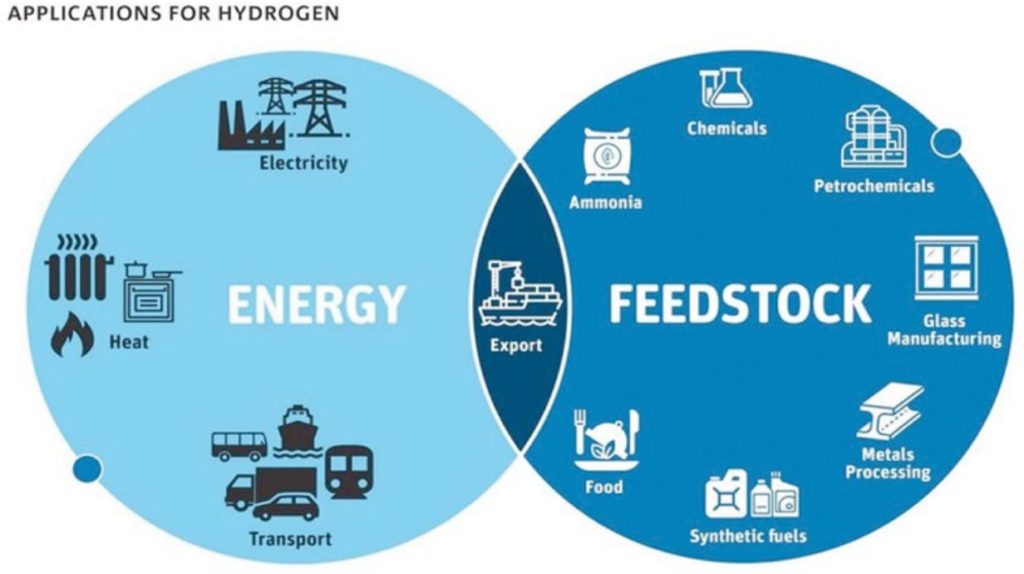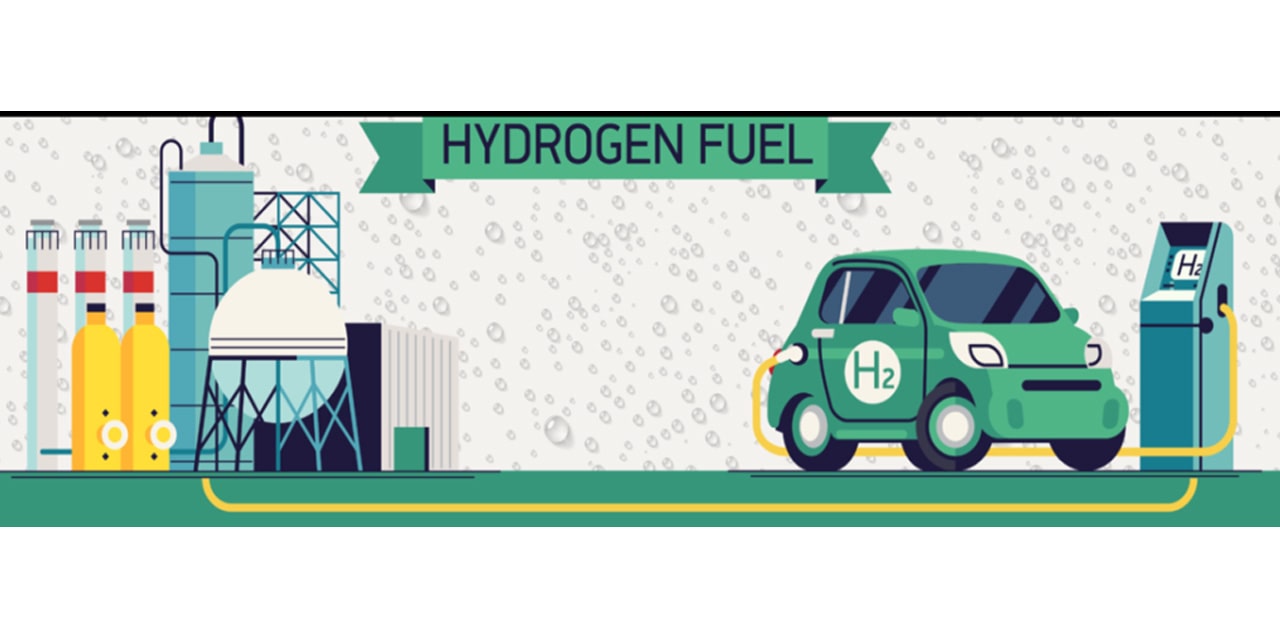There is increasing evidence of fossil fuels being replaced by renewable energies. The main drivers of this migration are climate mitigation, decarbonization and competitiveness of renewable energy technologies. Renewable electricity can help reduce emissions in road transport, low-temperature industrial processes and in heating buildings.
However, fossil fuels have a significant advantage in applications that require high energy density, industrial processes that rely on carbon as a reactant, or where demand is seasonal.
To fully decarbonize the world economy, it is likely a clean molecule will be needed, and hydrogen is well placed to play this role.
Hydrogen is versatile, reactive, can be produced with low or zero emissions, clean burning, transportable, and can provide long-term energy storage at scale (figure 1).

Figure 1: Applications of Hydrogen
There are no natural hydrogen deposits on earth, it must be extracted from other compounds by a chemical process. Most industrial hydrogen is currently produced from natural gas through a process known as Steam Methane Reforming, or SMR. Hydrogen can also be produced by the electrolysis of water (using an electric current to break water, H2O, into its component elements of hydrogen and oxygen). If this electric current is produced by a renewable source (e.g. Solar PV (photovoltaic) or a wind turbine), the clean hydrogen produced is known as green hydrogen.
In 2018, over 99 percent of hydrogen was made using fossil fuels. With the cost of wind and solar continuing to fall, the question is whether the cost for electrolyzers and renewable hydrogen can follow. If electrolyzer manufacturing can scale up, and costs continue to fall, then renewable hydrogen could be produced for N$0.7 to N$1.6/kg in most parts of the world before 2050.
It is crucial to help reduce carbon emissions from industry and heavy transport, and to provide long-term energy storage at scale, and there is a growing international consensus that clean hydrogen will play a key role in this transition to a sustainable energy future worldwide.
Namibia, which has excellent solar and wind energy potential, is well placed to produce clean and renewable hydrogen, and at a cost-competitive price. Namibia could have one of the lowest hydrogen production costs worldwide and this on a large scale. In addition, with Walvis Bay as a deep-sea port, strategically located and central for neighboring countries without sea access, Namibia is well placed to export. By investing in a hydrogen economy there will be new opportunities for employment and economic growth not just for Namibia, but the entire SADC region.
Infrastructure and logistics are key success factors for a green hydrogen economy, and Eos Capital, Namibia’s leading private equity firm, is committed to the growth and development of Namibia and the surrounding region through meaningful investments and progressive impact.
Are you or your company interested in the applications of Green Hydrogen? Contact the Eos Capital team today, admin@eoscapital.com.na.
About the Author: Anastasia is an intern at Eos Capital and is passionate about sustainable energy technologies. She holds a Bachelor of Science in Industrial Engineering and is currently pursuing her Master of Business Administration with an emphasis in Finance




